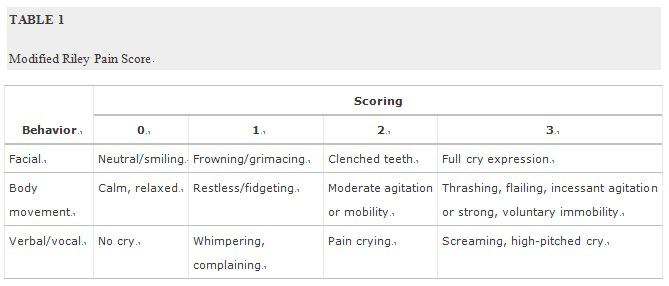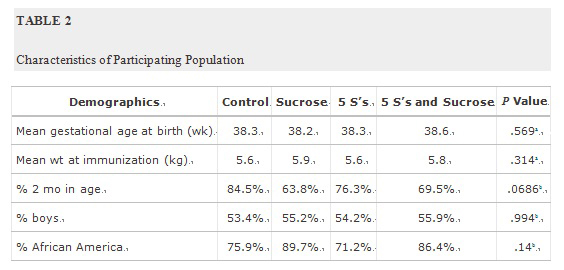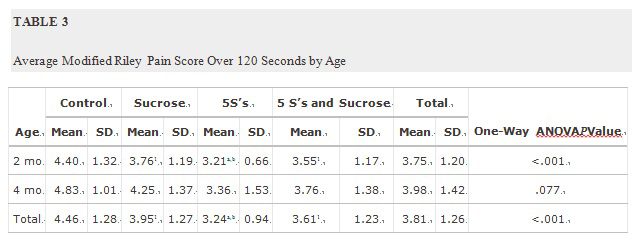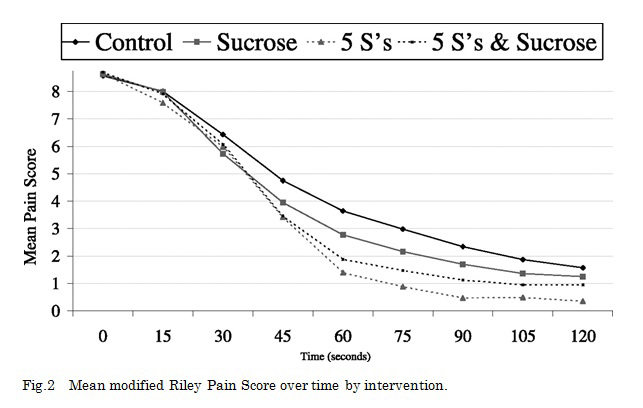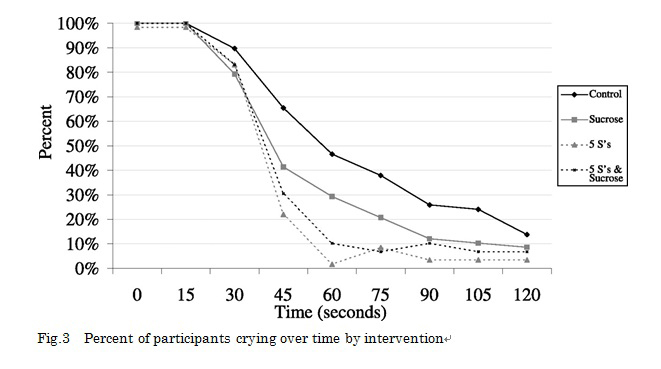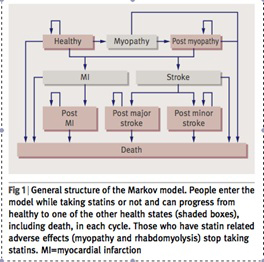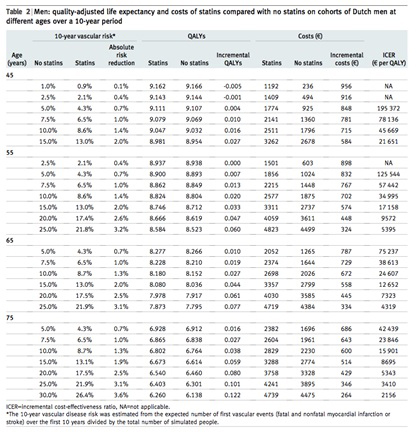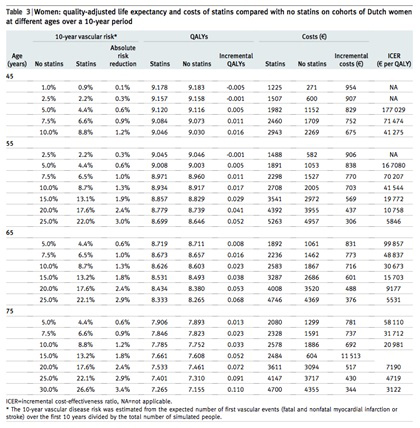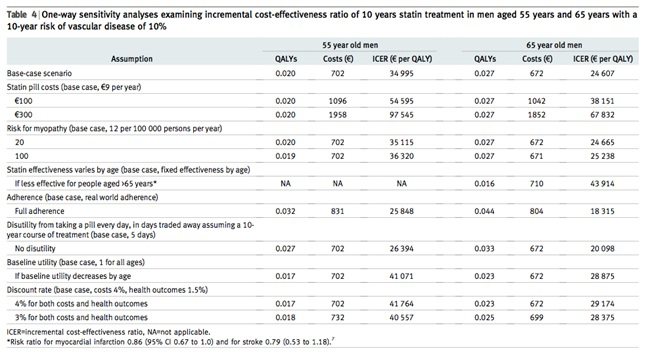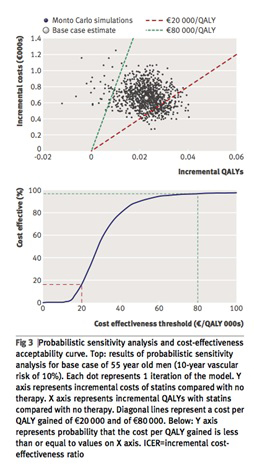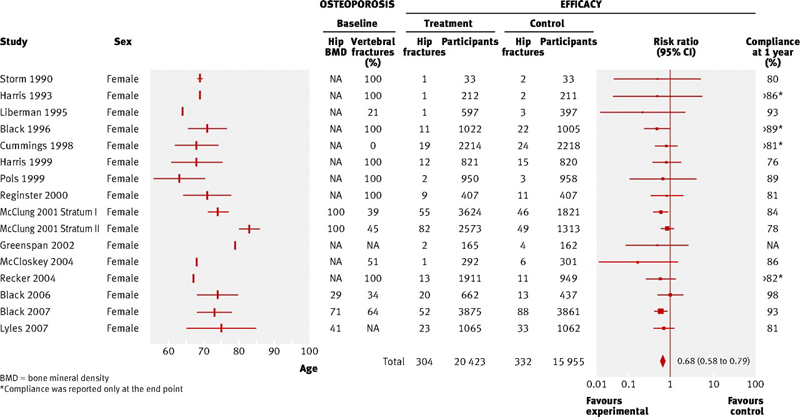【文献名】
文献タイトル:Effective Analgesia Using Physical Interventions for Infant Immunizations.
雑誌名・書籍名:Pediatrics vol.129 No.5, , pp.815-822
発行年:May1, 2012
【要約】
<研究の種類>
プロスペクティブな、ランダム化、一部盲検化された研究
<文献のPECO>
P:ワクチン接種にきた2ヶ月および4か月の健康な乳児
Inclusion criteria:出生時の妊娠週数が32-42週で、出生後20週未満
Exclusion criteria:ワクチン接種前4時間以内にアセトアミノフェンかイブプロフェンが投与された、神経障害を持っている、遺伝子異常がある、接種時に熱のあるなしにかかわらず中等度から重度の疾患を持つ、以前にワクチン接種でアナフィラキシーを起こした、あるいは以前に2ヶ月の時点でこの研究に参加したことがある(4カ月児)
E/C:以下の4グループに分けて比較
Group1.2mlの水をワクチン接種2分前に飲ませて、接種後に保護者があやす(コントロールグループ)
Group2.24%蔗糖液2mlを接種2分前に飲ませて、接種後に保護者があやす(蔗糖グループ)
Group3.2mlの水をワクチン接種2分前に飲ませて、接種後に研究者が5S’sを使用した身体的介入を行う(身体的介入グループ)
Group4.24%蔗糖液2mlを接種2分前に飲ませて、接種後に研究者が5S’sを使用した身体的介入を行う(蔗糖&身体的介入グループ)
O:Modified Riley Pain Score (Table1)を使って、時間経過にともなう乳児の痛みを各群で比較
接種後120秒全体にわたるModified Riley Pain Scoreの平均値を各群で比較
時間経過にともなう泣いている乳児の割合を各群で比較
・5S’sについて
*この研究においては3名の小児科研修医にて行われた
swadding:布でくるむ
side/stomach pasition:側臥位
shushing:シッ(静かに)と言う
swinging:揺らす
sucking:おしゃぶりを口で吸わせる
※接種したワクチンについて
ロタリックス(1.5ml)を最初に飲ませて、3つの筋肉注射(0.5ml)、B型肝炎ワクチン、ペンタセル(ジフテリア、破傷風、百日咳、ポリオ、Hibの5種混合)、プレベナー(を最後に)を90度の角度で大腿前方に23G、1.59cmの針でシニアのナーシングスタッフにより接種した
<結果>
ワクチンスケジュールを立てた286人が参加者としてスクリーニングされ、inclusion criteriaを満たした270人のうち、234名が参加に賛同し、うち230名がランダムに4グループに割り振られた(Fig.1)。各グループのデータはTable2に示されている。
・接種時のModified Riley Pain Score(合計0-9点)の時間経過にともなう変化:Fig.2
介入群はコントロール群に比べて有意に痛みの平均スコアが低く、さらに身体介入のみの群は蔗糖群にくらべて有意に低かった。
・接種後120秒間の全体にわたるModified Riley Pain Score(合計0-9点)の平均値:Table3
コントロール群で4.46、蔗糖群で3.95、身体的介入群で3.24、身体的介入&蔗糖群で3.61であった。
・時間経過にともなう泣いている乳児の割合:Fig.3
45秒,60秒,75秒,90秒および105秒の時点でコントロール群と蔗糖群とその他の2群とにおいて有意差がみられ、身体的介入グループと身体的介入&蔗糖のグループが最も低かった。これは痛みのスコアの結果と同様であった。
<結論>
2ヶ月児および4カ月児の定期のワクチン接種において、5S’sによる身体的介入により、立証された痛みスケールにおける痛みスコアの低下と泣いている時間の低下が認められた。
【開催日】
2012年9月5日
